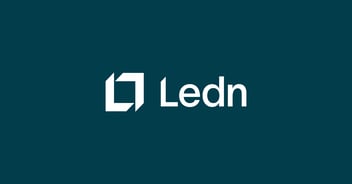Lending is older than [coined] money
Bitcoin
Bitcoin traded lower by 5.43% last week, closing at $26,929 on thinly traded volume. Interestingly, the U.S. dollar index rallied by 1.4% last week, which translated to a move down in Bitcoin prices, the S&P 500 and the Dow Jones index. The Nasdaq did trade higher but that is largely due to strong earnings results from Intel, Apple, Meta, AMD and other tech companies.
From a technical standpoint, Bitcoin held the important 200-week moving average support at $26,191. This level could get tested this week, and holding this level will be key to maintain the momentum in the current rally. If this level breaks, the next important technical support is at $22,000.

In terms of resistance, we continue to monitor the $30k and $35k levels as technical resistance to the upside.
As we’ll cover in our Whats Ahead section, there will be key hearings in the U.S. Congress and Senate this week to discuss crypto and stablecoin regulations. A leaked report by Forbes states that the Democratic Party circulated a memo that discusses a “game-changing secret plan” to crackdown on crypto. Allegedly they were given talking points ahead of this week’s hearing.
The hearings could result in headlines that could potentially impact price.
Digital Asset Markets:
Lending is older than [coined] money
Where do the concepts of lending and interest come from? In its most basic form, “loans” originated from the human need to trade with one another, and “interest” from nature itself.
According to the book “The Price of Time”, the concept of loans and interest is much older than coined money. Lending was used in civilizations like Mesopotamia to facilitate trade, farming (harvesting), and cattle farming. Trades for credit (harvesting) were facilitated before trades for barter.
All that is needed to enter into an interest-bearing loan agreement are 1) a mutually agreed-upon unit of account (a commodity or asset), and 2) a mutual standard of keeping time (a calendar). If you are using more than one asset or commodity, you need a pre-agreed exchange rate, or a mutually-agreed upon way to determine a “market” exchange rate for the 2 commodities/assets. You don’t need “coined” money for a loan - that came after.
Nature is fertile. And conceptually, an interest rate is typically derived from the productivity or reproduction rates of the asset or commodity being lent. You could lend someone seeds, and that person could return the same or more seeds at the next harvest. You could lend someone goats and that person could return the goats plus all of the new baby goats that were born, and share the milk, meat, and all other byproducts while they borrowed them. The first records of mesopotamian loans were in seeds, cattle and silver. And they each had different interest rates. The higher yield from the crop, or the higher reproduction rate from the livestock, the higher the interest rate.
The epistemology of many “finance” words also comes from nature. The word “capital” comes from “caput” - a head of cattle. In ancient Greece, the word “interest” was “tokos” - a calf. And examples abound in many other cultures.

Interestingly, a 19th century German economist, Karl Arnd, was the first to suggest that interest rates were regulated by “the proportion by which the timber in European forests is augmented through their annual growth .. at the rate of 3 or 4 per 100. As a result interest rates in these countries cannot fall below that rate.”. Others claim interest rates for economies are dictated by the speed at which the human population grows - that number has been dropping from 1.12% per year in 2017 to the most recent 0.84% - shhh don’t tell the Fed.
A little-known fact, the first ever set of laws known to man, Hammurabi’s code - which dates back to 1750 B.C. sets out explicit “maximum” interest rates for silver (20% interest) and barley (33.33%).
Which leads to an interesting question:
What are the market forces that determine the interest rate of an asset that doesn’t “reproduce”?
As mentioned above, the first-ever record of a “maximum interest rate” being set for a commodity that cannot be farmed or bred was the interest rate on Silver set by Hammurabi’s Code. The rate was set at 20%.
Who sets the limit?
In today’s world, the only entity able to enforce a maximum rate of interest in a market are government regulators. And these laws still exist today. But how do regulators set a “fair” interest rate for a good that cannot be reproduced? They always have to have a point of reference. These are usually advisors or members that have industry experience. But the question remains - who borrows a good that cannot be “reproduced” - and how do they make money with it? The answer is the same today as it was back then: market-makers.
Who are market-makers? A market like silver, or bitcoin, is decentralized. There is no central price feed for bitcoin or silver. Both of them, along with hundreds of other commodities trade internationally in the open market. Every day there are millions of merchants that need to trade in or out of silver/bitcoin et al, to conduct business. Because of this, there are price inefficiencies and credit needs from buyers and sellers around the world. Market-makers close those price inefficiencies and fulfill that credit need. They are there to facilitate trades and credit to merchants that need financial solutions and take a spread for offering the convenience. The market - or the participants, determine their spread, and therefore their profitability. It is not a “risk-free” way to make a spread, but as the market becomes more efficient, the risks become lower and operators become better with time. The spreads also drop lower, and inevitably, the interest rate paid to clients who lend those assets does as well.
Lending is never about the absence of risk. It is about finding the right organization to work with, and being adequately compensated for the risk through the interest rate you’re being paid.
Collateralized Lending:
Borrowing against pristine collateral is as old as lending. Dating back to the Mesopotamians, the first-ever records of loans mentioned all types of collateral as requirements for surety of payment. The mesopotamians have records of lending against houses, land and slaves. Back then interest could be paid in the same asset or in kind, with labor from the borrower, a family member, or a slave. Other seeds and livestock were also commonly accepted.
For further history on collateralized lending, the term “La Banca” - or the word “bank” comes from the lenders that began facilitating loans against gold and/or other assets for people of other religions in 16th-century Italy. (Back then, lending to and from people from the same religion was frowned upon and outright forbidden in some cases).
Conclusion:
Lending is almost as old as commerce, older than coined money, and a natural activity for humans across civilizations throughout its history.
Fast-forward to today, bitcoin created a new asset class, the most pristine and transparent collateral asset in our humble opinion. And it will inevitably have a thriving lending market. At Ledn, we’ve been leading the charge for 5 years - building “Bitcoin lending services” the way we believe it should be done. Transparently, accessible to all, and offering the same standards to all clients.
We have been leading by example since our inception in 2018. We pioneered Proof of Reserves for lending companies in the digital asset industry - setting the bar for transparency and accountability. 
We recently published our first-ever Open Book report, where we outline the current utilization of USDC and BTC assets, so that our clients can better understand how we generate interest for our Savings accounts and offer lower loan interest rates. And we recently announced our Regulatory Approval from the Cayman Islands Monetary Authority to register as a Virtual Asset Service Provider - becoming one of the first lending companies to ever receive this designation. This is just the beginning.
When seeking financial solutions for your digital asset needs, make sure to ask the right questions. At Ledn, we welcome your diligence.
The Week Ahead
It’s a big week ahead for bitcoin, with one of the biggest events in our industry kicking off this Thursday at the Bitcoin 2023 Conference in Miami Florida. Ledn will be present participating in a panel discussion on the lending industry on Thursday at 1 PM EST.
There’s also a high chance of regulatory headlines this week, with both the U.S. Congress and U.S. Senate holding special hearings about the recent bank collapses. Additionally, the Congress will hold a special session only to discuss stablecoin regulation.
Lastly we wrap up the week with a new record-setting bitcoin mining difficulty adjustment for Bitcoin.
As always, here’s a summary of the events and data that could move markets in the week ahead:

Notice for Canadian Residents: As of January 4, 2023, Canadian clients will no longer be able to take out new B2X loans. As of February 1, 2023, Canadian clients will no longer be able to open a new BTC or USDC Savings Account, deposit BTC or USDC to existing Savings Accounts or earn yield on any existing BTC or USDC Savings Account balances.
Notice for U.S. Residents: Effective March 1, 2023, U.S. clients will not earn interest on any BTC and/or USDC balance in their Savings Accounts and/or Legacy Savings Accounts. This article is intended for general information, educational and discussion purposes only, it is not an offer, inducement or solicitation of any kind, and is not to be relied upon as constituting legal, financial, investment, tax or other professional advice. This article is not directed to, and the information contained herein is not intended for distribution to, or use by, any person or entity in any jurisdiction or country where such distribution, publication, availability or use would be contrary to law or regulation or prohibited by any reason whatsoever or that would subject Ledn and/or its affiliates to any registration or licensing requirement. This article is expressly not for distribution or dissemination in, and no Ledn product or service is being marketed or offered to residents of, the European Union, the United Kingdom, the United States of America or any jurisdiction in Canada, and such product or service may only be marketed or offered in such jurisdictions pursuant to applicable laws or reliance on regulatory exemptions. A professional advisor should be consulted regarding your specific situation. Digital assets are highly volatile and risky, are not legal tender, and are not backed by the government. The information contained in this publication has been obtained from sources that we believe to be reliable, however we do not represent or warrant that such information is accurate or complete. Past performance and forecasts are not a reliable indicator of future performance. Any opinions or estimates expressed herein are subject to change without notice. This article may contain views or opinions of the author that do not necessarily reflect the opinions, standards or policies of Ledn. We expressly disclaim all liability and all warranties of accuracy, completeness, merchantability or fitness for a particular purpose with respect to this article/communication. Read our Disclaimers at https://ledn.io/legal/disclaimers



